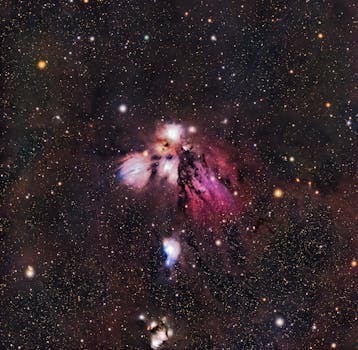
“
Beyond the Milky Way: Imagining New Worlds and Possibilities
Introduction to Space Exploration
Beyond the Milky Way: Imagining New Worlds and Possibilities is an exciting topic that has captured the imagination of astronomers and space enthusiasts alike. Our galaxy, the Milky Way, is just one of billions of galaxies in the observable universe, and each galaxy contains billions of stars and potential planets. As we continue to explore and understand our own galaxy, we also begin to wonder what lies beyond and what new worlds and possibilities await us.
Understanding the Milky Way Galaxy
The Milky Way is a barred spiral galaxy, consisting of hundreds of billions of stars, stellar remnants, interstellar gas, dust, and dark matter. It is estimated to be approximately 100,000 light-years in diameter and is thought to contain between 200-400 billion stars. Our solar system is located in one of the outer spiral arms of the galaxy, about 27,000 light-years from the center. For more on the wonders of galaxies, check out Galaxies of Dreams: How Imagination Transcends the Night Sky.
Exploring Beyond the Milky Way
As we look beyond our own galaxy, we find a vast array of other galaxies, each with its own unique characteristics and features. Some galaxies are similar to our own, while others are quite different. There are elliptical galaxies, irregular galaxies, and even active galaxies with supermassive black holes at their centers. The study of these galaxies and their properties can provide us with valuable insights into the formation and evolution of the universe. This exploration leads us to imagine new worlds that could exist in these distant realms.
Imagining New Worlds and Possibilities
As we explore the universe beyond our galaxy, we begin to imagine the possibilities of new worlds and civilizations that could exist. We might find planets with conditions similar to those of Earth, potentially supporting life. Alternatively, we might discover entirely new forms of life that are adapted to environments that are vastly different from our own. The search for extraterrestrial life is an active area of research, with scientists using a variety of methods to search for signs of life, such as the detection of biosignatures in the atmospheres of exoplanets. For insights on this journey, read From Stardust to Dreams: Imagining Life Beyond the Stars.
Conclusion and Takeaways
In conclusion, the exploration of space beyond our Milky Way galaxy is a vast and exciting field of study. As we continue to learn more about the universe and its many mysteries, we are reminded of the infinite possibilities that await us. Some key takeaways from this topic include:
- The Milky Way is just one of billions of galaxies in the observable universe.
- Each galaxy contains billions of stars and potential planets.
- The search for extraterrestrial life is an active area of research.
- The study of galaxies and their properties can provide us with valuable insights into the formation and evolution of the universe.






